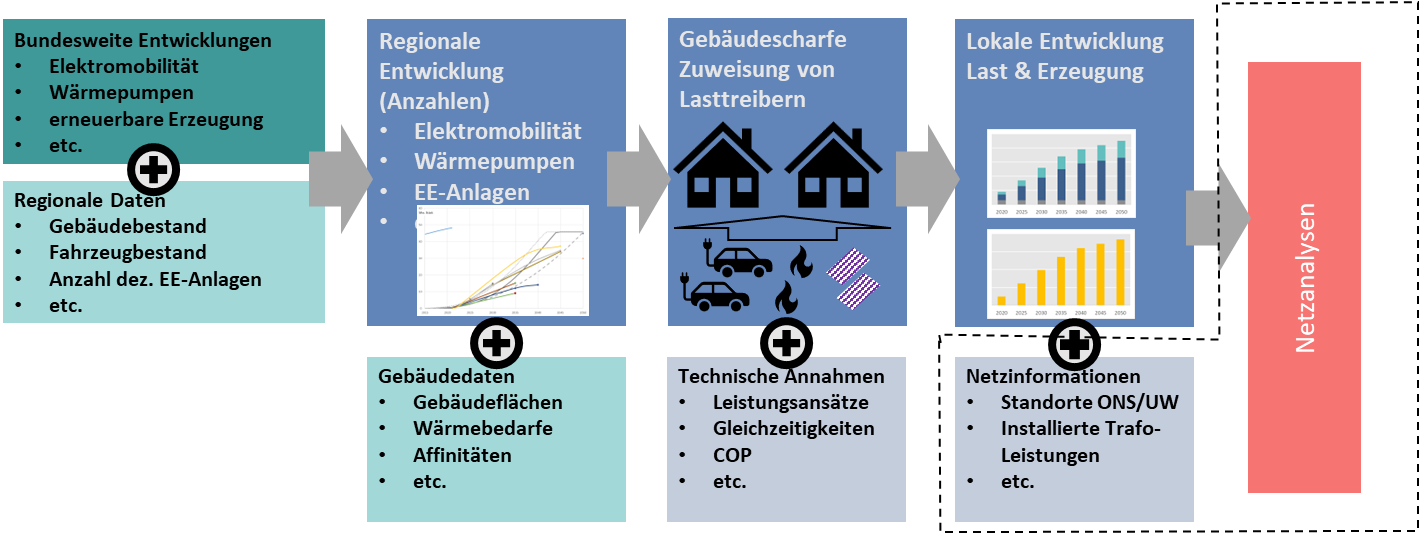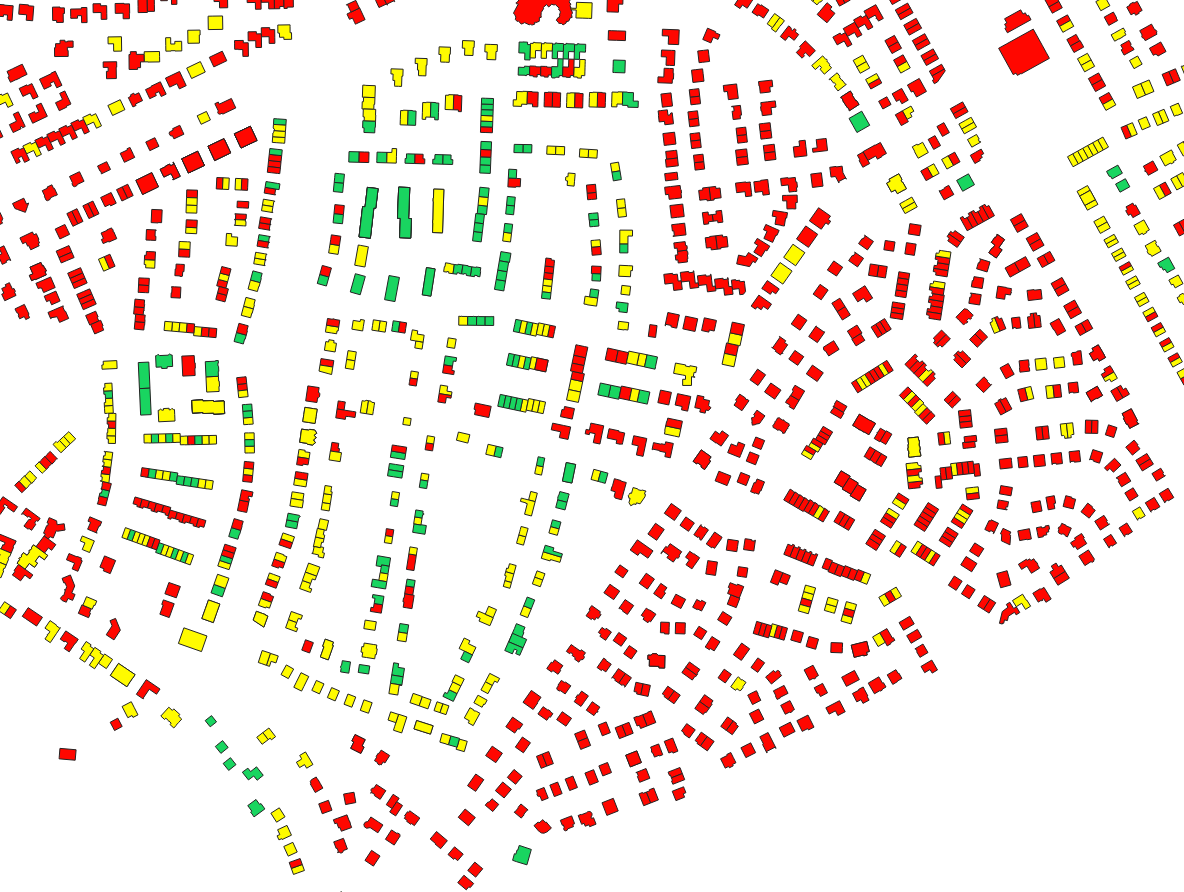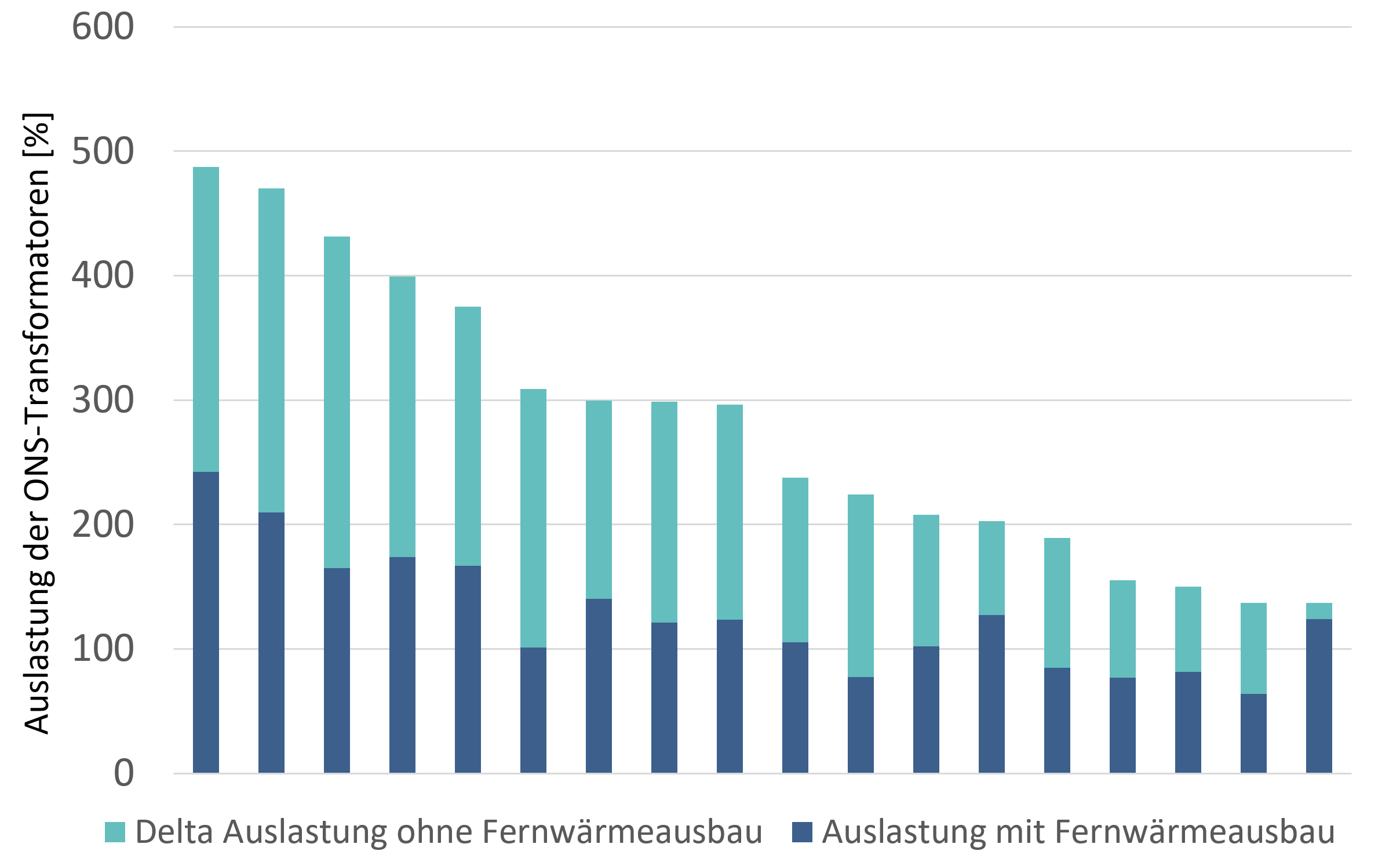Supply task forecasts
Contact person: Christian Linke and David Kemnitz
Since the amendment to the EnWG in summer 2022, § 14d of the EnWG all distribution system operators (DSOs) with more than 100,000 customers are obliged to carry out forward-looking grid planning, which includes the creation of regional scenarios and grid expansion plans based on these scenarios. Even for smaller DSOs, the preparation of forecasts on the development of their supply task is an indispensable basis for the timely and demand-oriented planning and implementation of grid expansion.
More than 5 years ago, Consentec developed a methodology for creating scenarios for the development of supply tasks. In more than 20 projects to date, we have been able to support smaller urban grid operators in particular in gaining a detailed picture of the future requirements on their electricity grids.

Vorgehensweise bei der Prognose von Versorgungsaufgaben
This methodology addresses all key developments that will influence the future requirements on the electricity grids. On the consumption side, these are primarily the electrification of the transport and heating sectors as well as the conversion of industrial processes to electricity-based applications and, on the generation side, the expansion of rooftop and ground-mounted PV systems and wind turbines. The results of any existing municipal heat planning can be used. In turn, the results of our analyses can be incorporated into municipal heat planning.
In addition to the increase in the number of consumption units (e-vehicles, charging infrastructure, heat pumps) or generation plants, their withdrawal or feed-in characteristics must be taken into account in order to be able to determine the simultaneous power requirements relevant for the grid design.

Beispiel für die Verteilung von Affinitäten für Elektromobilität innerhalb eines Ausschnitts eines Netzgebiets mit überwiegender Wohnbebauung (Quelle Affini-täten: Nexiga GmbH, Quelle Gebäudedaten: geofabrik.de)
The analyses are carried out in a building-specific resolution so that the results are directly suitable for use in detailed grid calculations for medium and low-voltage grids. The data used includes socio-economic data that can be provided by geodata service providers; Consentec works closely with Nexiga GmbH in this area. For example, the development of the private charging infrastructure is estimated on the basis of so-called affinities. Affinities describe probabilities for the purchase of certain products within a household and can be provided on a building-specific basis. As an example, Figure2 shows the distribution of affinities for electromobility for a section of the grid area of a small-town DSO. Buildings marked in red indicate a high affinity, buildings marked in yellow indicate a medium affinity, buildings marked in green indicate a low affinity for the prompt purchase of an electric car.
Assuming that the residents of the buildings purchase an electric car and a wallbox according to these affinities (high probability in the near future, medium probability in the medium term and low probability in the long term), and taking into account the expected charging behavior, the power requirements due to simultaneous charging processes and thus the (additional) grid loads can be calculated.

Bild 3: Prognostizierte prozentuale Auslastungen der ONS-Transformatoren im oben dargestellten Netzgebietsausschnitt für Szenarien mit und ohne Fernwärmeausbau
In addition to the development of the charging infrastructure, developments in the area of electricity-based heat supply are also taken into account. The expansion of a district heating supply is being considered for the supply area shown above. As part of the analyses carried out in this case, the loads on the existing substations were determined at a design-relevant point in time for the case with and without district heating supply. In the case without district heating supply, it was assumed that the majority of the buildings will be equipped with a decentralized heat pump in the future.
Figure3 shows the expected long-term utilization of the transformers in the substations that supply the buildings shown in the figure above for both cases. It was assumed that in the long term, car traffic will be fully electrified and therefore almost every building in this part of the supply area will have a wallbox or a wallbox and a heat pump.
Evaluations of this kind provide a sound basis for the subsequent determination of the specific grid expansion requirements and the resources required for this. Consentec also regularly supports distribution grid operators in these planning steps.